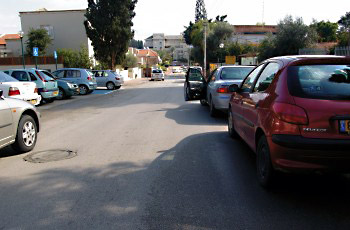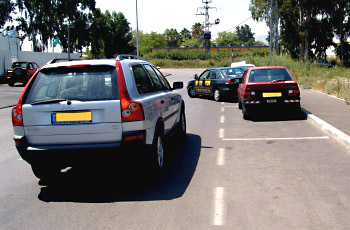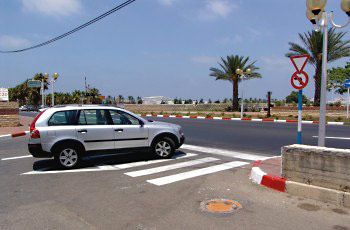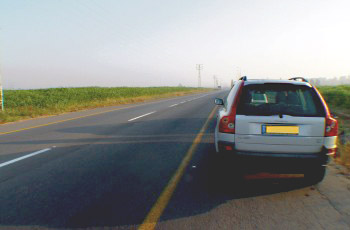Question:1
How can we minimize the risk of brake loss while driving on a mountain road?
Category : Safety
Question:2
How can you avoid collision according to the indications in the following picture?

Category : Safety
Question:3
What is the correct way for pulling onto a “hard shoulder” which is lower than the road?
Category : Safety
Question:4
When driving in reverse:
Category : Safety
Question:5
You arrived to an intersection that is not clear:(free)
Category : Safety
Question:6
What is the driver of the silver vehicle required to do according to the following picture?

Category : Safety
Question:7
“Alcohol slows down the driver’s ability to respond”: Correct or incorrect?
Category : Safety
Question:8
What might be the effect of sand scattered on the road?
Category : Safety
Question:9
What are the dangers of driving continuously for many hours?
Category : Safety
Question:10
Is it obligatory to use an appropriate lower gear on every steep descent?
Category : Safety
Question:11
One of the conditions justifying an overtaking of a driving vehicle is:
Category : Safety
Question:12
What is the most important principle when turning right in an intersection?
Category : Safety
Question:13
How would you conduct yourself when approaching the intersection that is depicted in the following picture?

Category : Safety
Question:14
Driving at night with the high beam can cause:
Category : Safety
Question:15
According to the following indications, how many vehicles are standing in front of you?

Category : Safety
Question:16
What is the correct order of actions while reducing the vehicle’s speed?
Category : Safety
Question:17
You are driving in a two-lane one-way street and try to overtake the vehicle driving in front of you. The main risk in deviating to the left is:
Category : Safety
Question:18
Which driver related ability is impaired during fog?
Category : Safety
Question:19
Can unprescribed medications have a negative effect on driving?
Category : Safety
Question:20
What is required in order to change lanes without causing any disturbance or risk?
Category : Safety
Question:21
When visibility conditions are impaired:
Category : Safety
Question:22
What characterizes a state of driving in which proper distance from the vehicle in front is kept?
Category : Safety
Question:23
“Beer is not considered as an alcoholic drink”:
Category : Safety
Question:24
What should a driver do when he approaches a road section on which oil was spilled?
Category : Safety
Question:25
When you are driving behind another vehicle:
Category : Safety
Question:26
When there is fog, a part from fog lights.
Category : Safety
Question:27
What is the risk in braking while being forced to pull onto the “hard shoulder”?
Category : Safety
Question:28
Why are you required to be more careful while driving after dark?
Category : Safety
Question:29
The driver’s reaction distance is the distance covered by the vehicle:
Category : Safety
Question:30
How does driving on the right side of the road affect drivers field of vision?
Category : Safety

